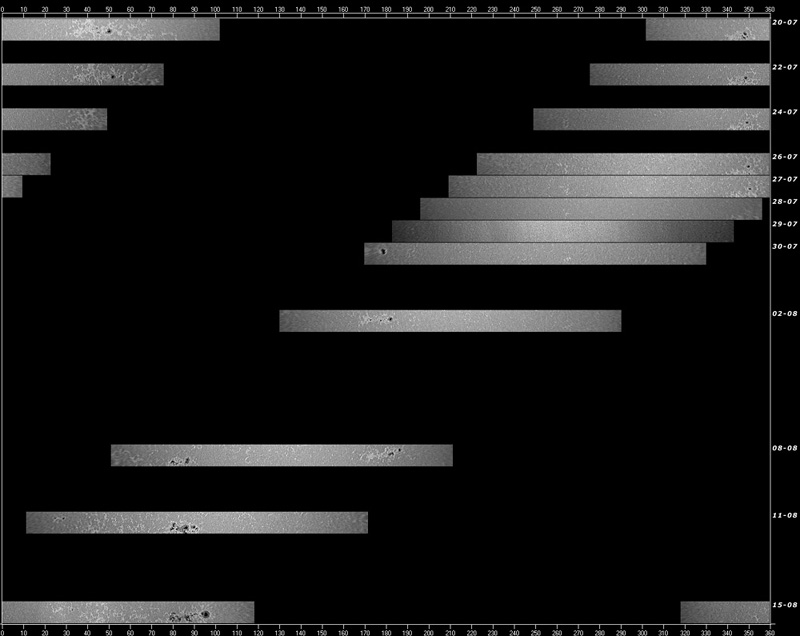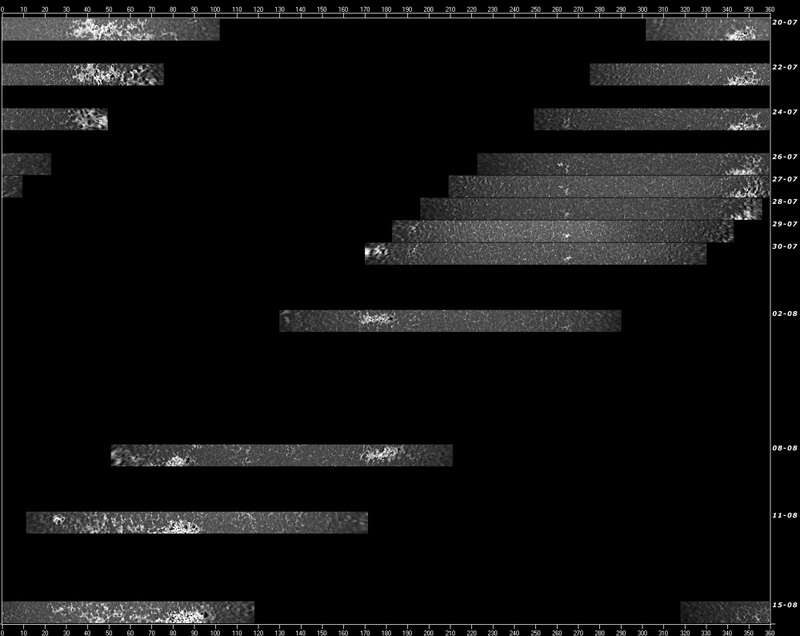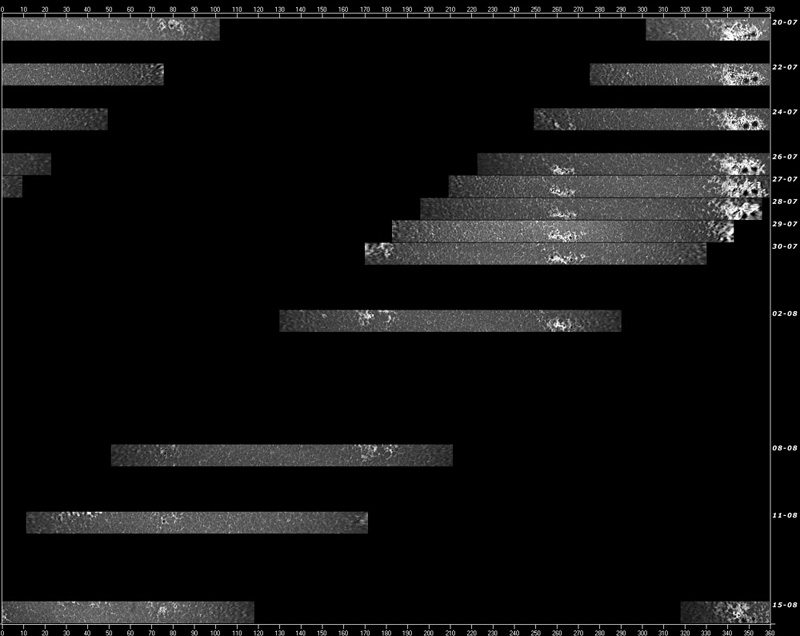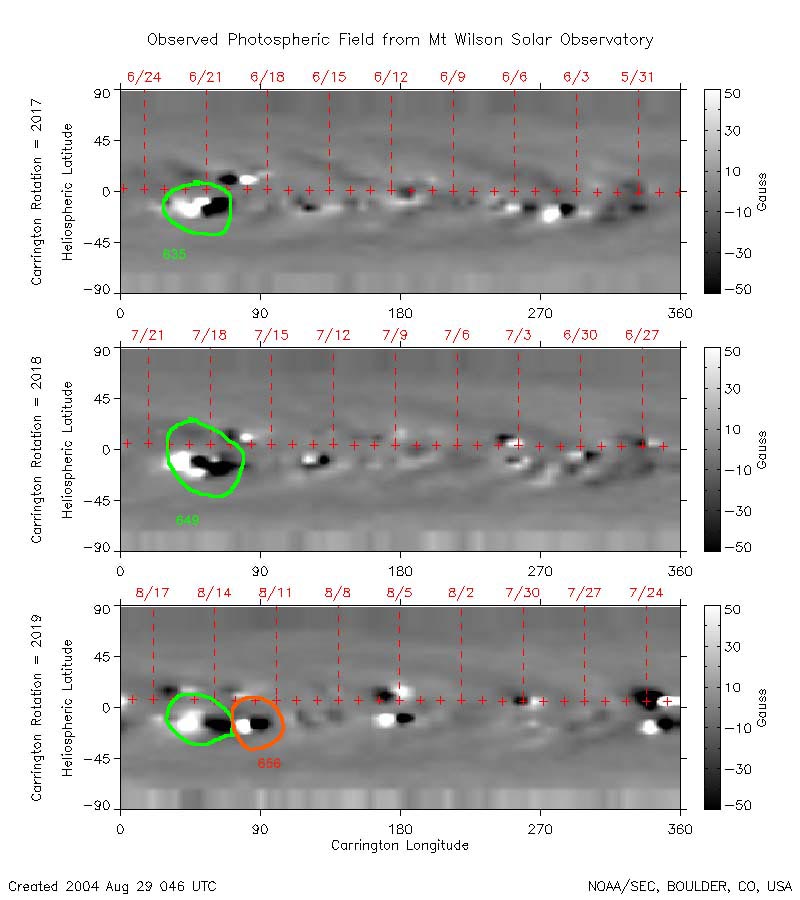|
August 17th, 2004
I grouped together observations that I made between
July 20th and august 15th (I have no previous images because
of holidays). The conversion in planispheres allows
to extract bands of same heliographic latitude and to make
a diagram according to the longitude and time.
The first diagram concerns the band from -5° to
-15° in
latitude. The images are taken in the continuum
of the spectrum, and thus show the photosphere and the spots.
NOAA 0649 was situated about 51° in longitude. A group of spots
appeared near 85° in
longitude in august. The NOAA which attributes a number to
every active region appearing on the Sun effectively
baptized it NOAA 0656.
We can however ask if 0649
and 0656 are the same group of spots, as a lot of sites and forum
announced it. It's not easy to know what takes place
behind the Sun! However we can notice that 0649 seems to
be reduced and that 0656, on the contrary, shows
a longitudinal expansion very fast,
indicating by extrapolation a "birth" near august 2nd near
80° in
longitude. Even by prolonging the movement of the one or the other
group, there is no connecting, there is a 10° minimum gap!
The following diagram concerns the same zone
for the same dates, but the images are taken in the K line of
ionized Calcium. We see then the faculae which mark the active
regions in all their spatial and temporal extension. One more time,
facula area of
0656 seems to be independent.
I thus think that NOAA 0649 and 0656 are
2 different groups of spots but I am interested by any information
confirming or countering this assertion.


As comparison, here are 2 other diagrams of the
same period but for the band from +5° to +15° in latitude
where throned the group NOAA 0652, at 350° in longitude. The group
appeared to the following rotation (here captured on august 15th) got
the number 0661 but the position is identical and 2 enormous characteristic
spots, now H class, thus stable, give no doubts
about the identity of the group.


September 17th, 2004
Here are synoptic maps realized at the Mount Wilson
Observatory. They show the magnetic fields during 3 rotations
from 2017 to 2019. The white and black areas are opposite polarities
and correspond to groups of spots and/or active regions.

We see clearly that a new area appeared
at the right of NOAA 0649 (in green) to give 0656 (in orange). These
two active regions thus have each their own identity.
NOAA 0649 was the return of 0635. It is interessant
to notice that the return of the active region NOAA 0649 is revealed
by its magnetic field while spots disappeared.
| 
 )
) )
)







